#brierly Ronan
Explore tagged Tumblr posts
Text
Reading Thrawn: Treason and
An Imperial Officer: *exists*
Ronan: I've never met this person, but I know they're a horrible corrupt useless waste of space loser who's obsessed with petty politics and can't see the big picture. I hate them. Unlike Director Krennic, who is smart and perfect and pure and could solve all the Empire’s problems if only people got out of his way for five minutes so he could do exactly what he wanted. I love him.
#thrawn#thrawn treason#star wars#brierly ronan#no but I like ronan. I like him far too much#he's ridiculous and pompous and you want to push him down some stairs#but he’s risen through the ranks to become more than a nobody#and he’s smart#very smart and quick on the uptake and yeah that's what does it for me#if he wasn't intelligent I wouldn't still be thinking about him#another smart and competent imperial to add to the list#this book is so great though#it's full of gifts#krennic#the empire
97 notes
·
View notes
Text
A guide to chiss fashion
Alright, it’s finally done. I’ve managed to compile my headcanons in a format I’m more or less happy with so say hello to the chiss fashion guide. As I’ve said before, this is a homage to my love for fashion history and fashion illustration books so it’s written in the same(ish) kind of style, with made-up history and trivia behind it.
Mind you this isn’t about what your regular civilians wear – I can’t even begin to imagine what the spectrum of current fashion looks like for a species spread over multiple planets, that’s too much of a tall order.
Instead I’ll talk about what I imagine as ‘standard traditional wear’. A kind of traditional ensemble for formal occasions which is also the accepted dress code for the upper ruling classes and administration. The books give us many indications of how hung up the chiss are on rank so I imagine their fashion reflects that accordingly, with dress codes and etiquette and whatnot.
So without further ado, let’s start with structure.

The typical traditional ensemble consists of: underwear (plus any additional thermal underlayers), an underrobe, outerwrap robe, jacket (optional, mostly decorative) and top robe or coat (not pictured) for more severe weather and outdoor activities.
First we have the underwear layer (1) with a wraparound robe which can be long or short depending on the season, breeches and any other additional thermal layers underneath.
Next comes the underrobe (2) with a high buttoned collar and fitted sleeves. A slit starts at around chest level and ends in the usual overlap pattern at the ankles. This hem is often embroidered and is meant to be visible under the outerwrap robe.
This robe is also what I imagine is used as lounge wear at home (sometimes accompanied by a lounge robe) or as an outer layer in warmer climates and casual settings, though it’s usually decorated with accessories to make up for how plain it is. Some underrobes, especially padded styles for colder weather, have a waist string to pull excess material in in preparation for the layers to come.
Underrobes for low ranking administration are traditionally red, symbolizing specific qualities, but more on color symbolism later.
Then we have the outerwrap robe (3) with its flared bottom and sleeves which are also typically decorated. The outermost edge of the hem is important here because that’s where the trim that shows family allegiance goes.
These robes are closed with a pair of strings (usually at waist level but may be higher or lower depending on current trends) and the kind of knot used varies depending on social standing and occupation, again, a reflection of how classist the chiss are in my mind. For lower class administration, in case the knot is obscured by a decorative item (like a jacket or scarf), the item is required to have strings of its own where the knot can be duplicated.

The next part of the outfit is the jacket (4) which also varies in style depending on the wearer’s rank. A popular style for low ranking administrators is a waist or thigh level boxy cut with rectangular sleeves that don’t cover the embroidered hems of the robe under it.
Jackets can have individual trims and even small lapels. Structured shoulders and wide lapels are inappropriate as they’re reserved for upper level Aristocra.
Despite their popularity, these jackets aren’t a practical item since their cut provides little insulation and they prevent the use of garments like top robes and coats. Because of this they are either meant to be taken off or worn with cloak-like outer layers outdoors.
Fashion, especially that of the high class, is rarely all practical so I think it’s neat to include elements that are less functional and more so trendy, decorative or appropriate.
This goes in the opposite direction as well and I imagine there being plenty of modern modifications like hidden zippers for easier donning and a variety of false hems, cuffs and collars to minimize layering, making the outfits more functional.
As long as the overall silhouette and main elements are retained, the outfit is considered appropriate though more formal events are usually attended in proper full traditional wear.
Next we have accessories.

The most common ways to accessorize in traditional ensembles are scarves, jewelry, fans, and a variety of trims. Scarves are normally worn between layers and can be used to cover up the open hole at the neck in colder settings. The long sleeves make bracelets impractical but earrings and necklaces are hugely popular. Handheld fans are also a stylish way to elevate the outfit and different kinds of trims like feather and fur are used in less formal settings.
With all that in mind a complete outfit ends up looking something like (5).
Moving on to Syndics:


(traditional silhouette and some images of syndics to show the range of variety available to them)
With Syndics we start to see the appearance of structured shoulders (a strictly upper class element) and more extravagant lapels, particularly in jackets. Still no structured collars however as these are reserved for Patriarchs. Jackets, in contrast to those worn by lower ranking administrators, are longer and made of soft, flowing fabrics like silk, with the goal being to show off expensive materials and dyes (hence rich colors and light silky textures).
Proper etiquette regarding underrobes and outerwrap robes remains the same with one exception being the waist knot: higher ranking syndics aren’t required to replicate the knot if it’s covered by an overgarment or accessory (a syndic’s status is obvious from other elements of their outfit).
In general Syndics are the echelon with the most freedom when it comes to their fashion. With the exception of some traditional elements, there’s more room for variation in accessories, cuts and combinations: Low ranking Administrators need to follow a stricter dress code while Patriarchs are limited by the need to project a certain image so you see the most variety in the fashion of Syndics, the only exception being extremely formal events and ceremonies where the traditional silhouette is a must.

(Syndic Zistalmu with a more personalized interpretation of the traditional structured shoulders.)
And finally, there’s Patriarchs.
Patriarchs, in my mind, have the strictest and most elaborate dress code. Their outfits retain the most traditional elements so they’re like a walking museum piece in, sometimes literally because many of the pieces they wear are hereditary and come from famous artisans.
With Patriarchs we see floor-length jackets, very wide lapels, often with opulent linings like patterned velvet, structured collars (attached to the jacket separately), decorative skirts, silk undergarments and elaborate headwear. In addition, their outerwrap robes fasten with two twin knots rather than one.

Most if not all of these elements are strictly reserved for Patriarchs so they’re instantly recognizable.
The jackets are both long-sleeved and sleeveless depending on how lavish the robe underneath is and the wearer’s desire to show it off.
The separately attached collars are distinct and were originally meant to demonstrate proper posture, fitting best when the wearer was standing or sitting upright. Their rigidity and restrictiveness has decreased over time but they still serve to highlight the wearer’s stance.
The collars are the only element I think I’m willing to allow for Patriels as well, albeit I imagine them a bit more understated. I’m still in two minds about the rest.
For Patriarchs, the top of the white underwear robe is also visible above the underrobe collar – normally underwear garments are supposed to be concealed but these robes were given tall necklines to prevent chafing to the neck from the structured collars worn on top. In order to do that they were made from fine silk which eventually became a status symbol, both because of the expensive material and the fact that they were used in combination with structured collars and nowadays the high collar of the robe is visible at the neck.
The overskirt (pictured above and fastened with strings) is the most traditional element of the ensemble. It’s become obscure in other ranks and is distinctive as a result. The pleating is meant to demonstrate an abundance of fabric, usually heavy patterned or embroidered velvets, and I imagine these pieces to be especially heavy. Its only purpose is for layering and decoration.
Somewhat counterintuitively, Patriarch robes have less lavish lower hems (absent the usual flared shape and no trailing fabrics) to allow for ease of movement and compensate for the extra weight added by the rest of a Partiarch’s accessories. And when I say these outfits are heavy, I mean heavy.
Ceremonial robes in particular are notoriously a nightmare to wear and require practice and a good bit of stamina.

(ceremonial robes)
In terms of curiosities, the Stybla are an interesting case both because their Patriarch is allowed to wear ruling family regalia despite not being one of the nine and because they preserve some older elements in their garments from the time they were the only ruling family. Like the gold pin with their family crest, attached to the lapel. The curled hair style and ‘sun’ style headpiece are also elements that go in and out of Patriarch fashion but the Stybla stick to them because that’s the style that was prevalent in their heyday.
All of this is for the purpose of projecting the image of an innocuous quaint old family that still clings to its ‘faded’ glory.
Now for headdresses. There’s three main styles of headdress, labelled ‘moon, ‘planet’ and ‘sun’ accordingly. The main circular elements are meant to display family crests and can have various additional accessories attached to them like chains and ornaments.

I imagine there used to be more styles, at one point as many as the ruling families, but in time as fashions shifted they boiled down to the three main ones. These are usually worn with the traditional long hairstyles that all patriarchs conform to and are attached using a system of clips and pins to the topknot at the back.
The hairstyle itself is known as the ‘waterfall’ style, inspired by a classical style of sculpture.
Pictured below is a ceremonial style headpiece which are only worn at the most formal traditional ceremonies.

In general, these headdresses are somewhat unwieldly and unstable if the wearer moves too suddenly. This is again intentional as similarly to the collars restricting posture, it’s meant to restrict movement to ‘slow’ and ‘deliberate’.
And finally we have color symbolism
This is something I imagine as very important for no other reason than it gives me another fun element to play around with so let’s get into it.
In general, a chiss outfit is mainly made up of cool colors and a few warmer highlights though that can sometimes be flipped depending on the wearer’s preference or current trends. Overall there’s a preference for cooler colors and those close to the chiss’ natural coloration (skin and eyes) which also has biological reasoning but more on that later.
Most importantly, colors have culturally established symbolic associations, meaning the wearer can choose qualities they want to emphasize through their choice of color. This is often done through statement pieces to make the choice stand out, such as: eye catching clothing items or accessories, wear frequency, color predomination, etc. Often times the colors don’t reflect the wearer’s true qualities but rather the image they’re trying to project.
Because of the complexity of this system, most Aristocra rely on tailors and stylists to construct their outfits (and by extension public image) for them.
There’s also the so called ‘military colors’ (black and white) which are reserved for the army and navy and are only used as highlights in non-military contexts or by off-duty members of the military:

(General Ba'kif depicted in military colors with Stybla teal, decorative fan and robe trimming)
Colors are divided into ‘cardinal colors’ with long established traditional meaning and secondary ones whose meaning is fluid and depends on current trends. The cardinal color symbols are as follows:
Blue – order, duty, perseverance Red – passion, diligence, honor Purple – firmness, reliability Magenta – innovation, farsightedness, creativity, individuality, self-assurance Green – steadfastness, calm, security Orange – boldness, confrontation, certainty in battle Yellow – vitality, energy, enthusiasm Black – stability White – prestige, perfection, glory
(In chiss culture, light blue is a separate color from dark blue. The blue referred to here is what is commonly referred to as dark blue.)
Sometimes colors can be divorced from traditional meanings like when they’re used to denote family allegiance or as secondary colors meant to just compliment a palette. The color symbolism system is also all but irrelevant for the general public where trends and personal preferences take priority.
It still carries a lot of weight in the upper classes, however. For example, low ranking administrators are expected to wear red underrobes to symbolize their dedication and diligence.
An example of how colors can be used to make a political statement is Patriarch Thurfian, who upon being promoted to his post adopted a color palette of blue, purple and green to indicate a stable, orderly and traditional rule as opposed to Thooraki’s more maverick politics and preference for warm reds, yellows and magentas.

(Patriarch Thurfian in characteristic blue palette with 'moon' style headdress and purple collar. The jacket is sleeveless, showing off the decoration of the outerwrap robe sleeves.)
Overall, there are many ways to use color to indicate meaning. Warm vibrant colors are in general a bold choice so they’re seen as more of a statement, like for example a bright yellow scarf.
Syndic Thrass favored a bright magenta jacket with wide short-cut sleeves to emphasize his charisma. Zistalmu is an example of a more fashion-forward choice with a predominantly maroon color palette, a secondary color with fluctuating meaning. Colors can also underline subtle family and political allegiances, like Ba’kif wearing teal (a color traditionally associated with the Stybla) as a highlight color off duty.
Lastly, biology also plays a part in color preference, albeit a minor one. (Disclaimer, I’m not a biologist so take this section with a grain of salt.)
Unlike humans, chiss are tetrachromats, meaning they have four types of light-sensitive cone cells in their eyes. In addition to the cones most sensitive to short (blue), medium (green) and long (red) wavelengths, the ones found in humans, they also have ones that respond to the infrared spectrum, giving them their infrared vision.
They also, unlike humans, have a higher number of blue sensitive cones and a very low number of red sensitive ones. This is because even before Csilla’s shift to a cooler climate, the flora and fauna of their world had predominantly blue pigmentation, the same pigment that gives them their skin color, which is the main evolutionary reason for their sensitivity to blue.
This imbalance is somewhat made up for by their infrared receptors, as infrared is next to red on the spectrum, but the low number of red sensitive cones means they’re not as sensitive to shades of orange and yellow.
Despite this, they still use these colors in their wardrobe (albeit less frequently and with less variety) and the rarity itself has contributed to the specialness of their meaning. Red in particular has proved itself an enduring staple because of its presence in the color palette of natural chiss pigmentation.
The rarity of these colors could also explain why they’re assigned traditionally less desirable virtues in the color symbolism system.

(secretary Ronan (Lyron) as I imagine him in my fic, with a red administrator underrobe, embroidered outerwrap robe, and yellow scarf as statement piece accessory.)
I’ve also toyed with the idea that the bioluminescent properties of their eyes interfere with the natural perception of colors (much like a red filter) which has led to an adaptation where the brain filters out the excess light in the red spectrum, making them even less sensitive to different shades of red and its adjacent colors. It’s an adaptation similar to that which allows most species to filter out constant monotonous background noise to aid hearing.
But that’s another thing I’m in two minds about as it complicates things further and I’m not too sure of the biological mechanics of it.
#chiss#chiss art#thrawn#thrawn books#thrawn ascendancy#chiss headcanons#thurfian#mitth'urf'ianico#ba'kif#supreme general ba'kif#zistalmu#brierly ronan#my art
180 notes
·
View notes
Text
This post rolled across my dash today and I remarked to my sibling that this is something Jova Tarkin would do and say. They noted that young Wilhuff would never have heard that word before, which naturally led me to create this template on my way to class.

#star wars#shitpost#orson krennic#brierly ronan#jova tarkin#natasi daala#darth vader#anakin skywalkiner#conan antonio motti#wullf yularen#colonel yularen#dedra meero#captain pellaeon#mas amedda#wilhuff tarkin#grand moff tarkin#sheev palpatine#darth sidious#emperor palpatine#supervisor blevin#mitth'raw'nuruodo#grand admiral thrawn#lio partagaz#major partagaz#royce hemlock#syril karn#firmus piett#tw swearing#tw c word#what are the common tags to filter this word for people who don't want to see it
96 notes
·
View notes
Text
cant believe i havent seen a version of the “im not calling you good boy” meme with krennic and thrawn or krennic and tarkin
or ronan and krennic!
#star wars#krennic#orson krennic#director krennic#thrawn#grand admiral thrawn#tarkin#brierly ronan#ronan
40 notes
·
View notes
Text

That one ship meme but with Thrawn characters.
As always with this meme, the term canon is used very loosely. And no hate to anyone!
Picture quality was demolished as always.
I made some Outbound Flight deepcuts in this one
#thrawn#grand admiral thrawn#mitth'raw'nuruodo#ar'alani#karyn faro#brierly ronan#Jorj car'das#Jorj cardas#samakro#thalias#Thranto#thrawn ascendancy#gilad pellaeon#mitth'ras'safis#outbound flight
258 notes
·
View notes
Text
something else I found in the trailer that has me a bit lost

Krennic and the three ISB lieutenants (as i presume they are) all have this silver badge on their collars, but in every other version of both Krennic and the ISB lieutenants outfits it isn't there.


Even the ISB attendants don't have it as apart of their uniform. One thing to consider is that they're Krennic's assistant directors (e.g Brierly Ronan). but that still doesn't explain why in only this scene they're worn, i'm also stumped on the black reflective material attached to Krennic's shoulder.

It looks like its made of some kind of plastic material and it seems to go at leas to his shoulder blade if we go by the way its curved, but again its the only time we've seen this on his outfit, i also think its too long to be some kind of epaulettes.
11 notes
·
View notes
Text

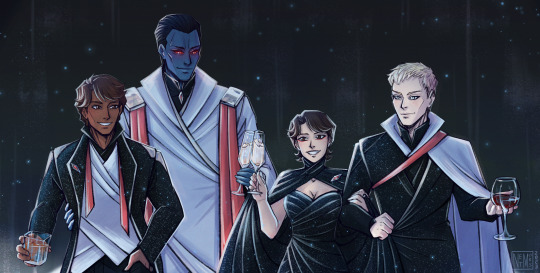
HAPPY NEW 2024 YEAR!!!!
#happy new year#happy holidays#new year#new year 2024#2024#star wars#thrawn trilogy#thrawn#grand admiral thrawn#mitth'raw'nuruodo#karyn faro#eli vanto#eli'van'to#brierly ronan#thrawn books#thrawn ascendancy#ahsoka series#star wars rebels#my art#netmors#art#illustration#christmas
413 notes
·
View notes
Text
Orson “Kalkite” Krennic
Such a freak…

“SPIDERRRRZZZZZZZZ”
Why can’t Krennic be normal?? 😭 He’s such a little freak
Bonus: Comic feat. Ronan that took me less than 3 minutes to draw

#artwork#digital art#fanart#my art#star wars#star wars fanart#brierly ronan#director krennic#spiderrrrzzzzzz#Kalkite#deep substrate foliated kalkite#orson krennic#diva#andor season 2#rogue one
23 notes
·
View notes
Text
Ronan: Eli Vanto is a traitor to the Empire!
The entire Chimaera comes to a stop.
Thrawn, gasps and covers Eli's ears: You shut your whore mouth...
65 notes
·
View notes
Text
Happy new year (sorry I'm late)
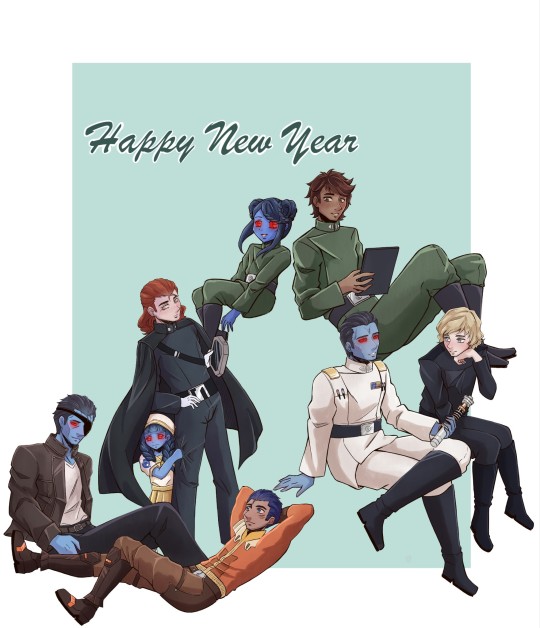
I want to celebrate the new year not to show what happend 2023, but what will be 2024.
Every pair stands for one story. Originally I wanted more but, 1st I underestimate how long I need for one pair and 2nd I didn't want to draw 7 diffrent Thrawns.
Notherless I wish everyone a happy new year with all best wishes.

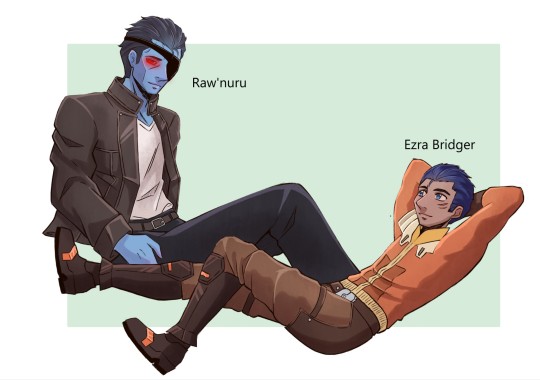
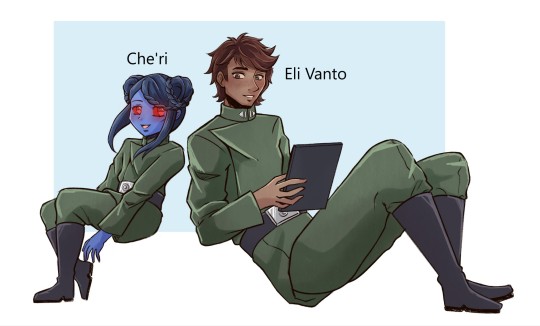

#happy new year#fanart#star wars#sw fanart#grand admiral thrawn#thrawn#ezra bridger#digital art#brierly ronan#un'hee#che'ri#eli vanto#luke skywalker
209 notes
·
View notes
Text
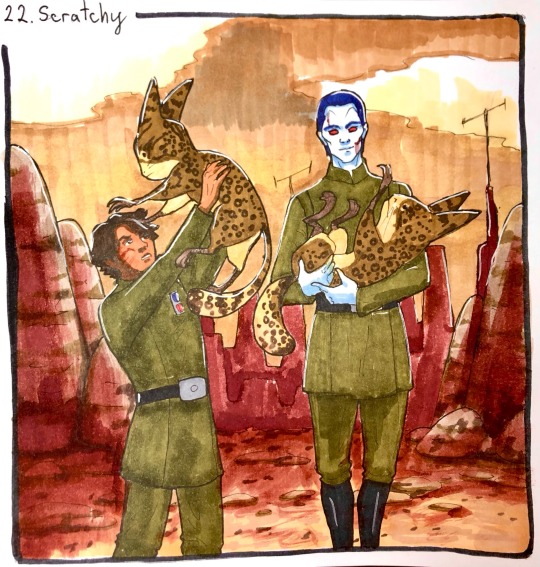
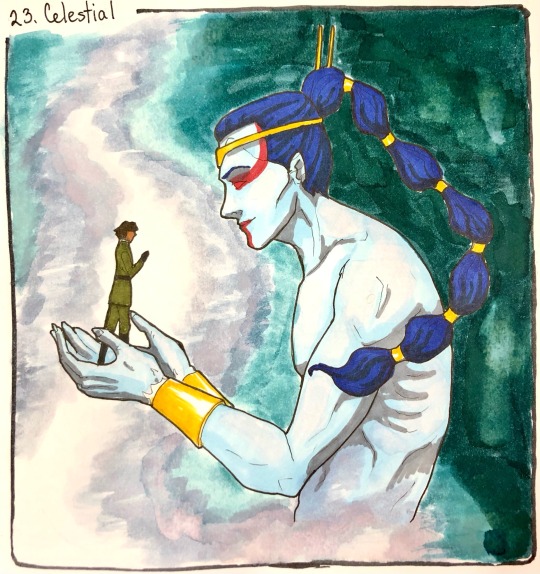
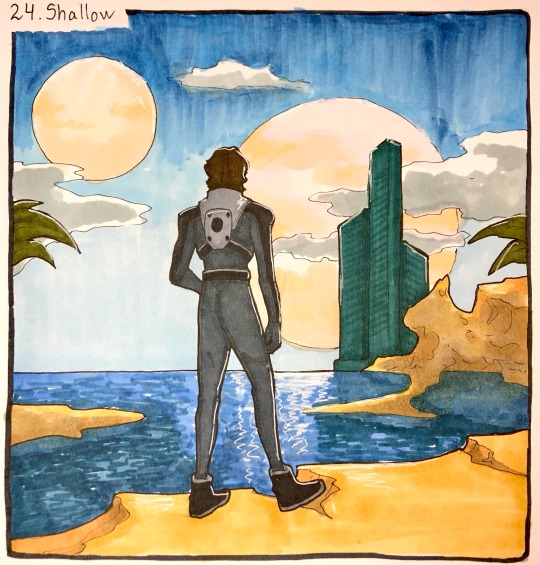


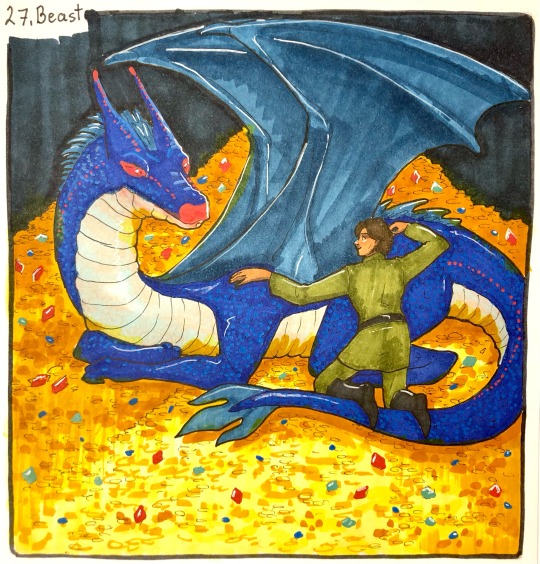

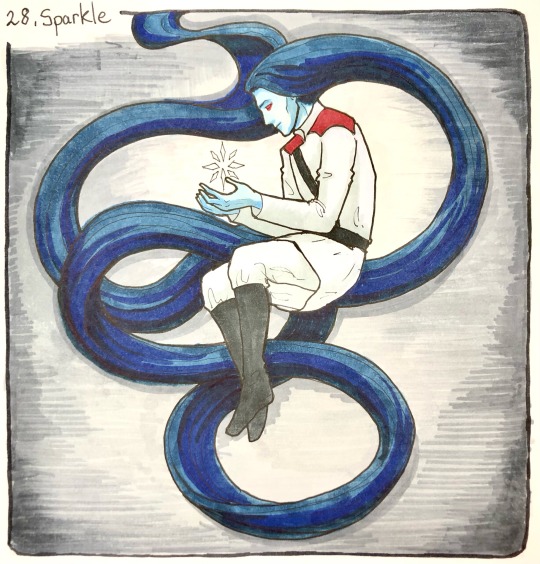

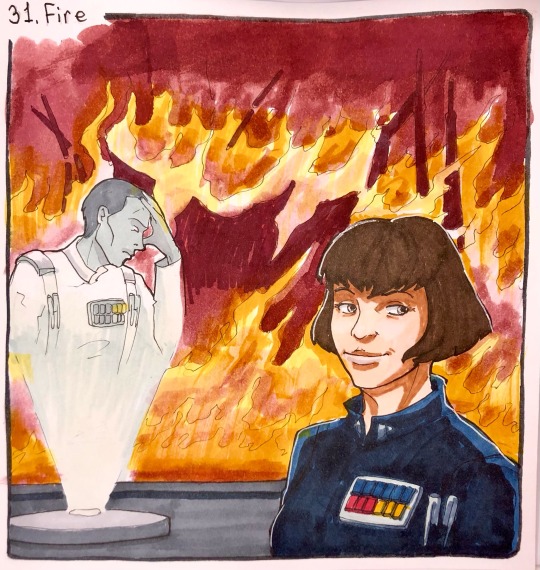
Last one of Thrantober 2023
I was really tired but managed to finish in time!
#thrawn#star wars#art#eli vanto#fanart#thranto#au#thrantober#chiss#arihnda pryce#brierly ronan#ar’alani#joruus c'baoth#loth cat#grand admiral thrawn#fan art#thrawnpunzel#genie!thrawn
237 notes
·
View notes
Text





chiss illustrations finally here! we've got Thurfian, Ba'kif, Zistalmu, Ronan (as I imagine him in my fic) and Lamiov in that order
these took a while to figure out but I'm happy with the result
#thrawn#thrawn ascendancy#thrawn books#chiss#ba'kif#thurfian#brierly ronan#zistalmu#lamiov#supreme general ba'kif#mitth'urf'ianico#irizi'stal'mustro#thrawn treason#chiss art#chiss ascendancy#my art#Buried in Ice fic
204 notes
·
View notes
Text
Eli lives on in my memes (Filoni, get out of my sight!)
Thrawn: BWWAAAAAAAAAA! Oh, you hear that? That's the wrong opinion alarm. Ronan, pissed: That is not something you actually have installed. Eli: Sorry, say again? I couldn't hear you over Thrawn´s alarm that YOU SET OFF with your WRONG-ASS OPINION.
#star wars#incorrect star wars quotes#star wars memes#they are ganging up on him#he will cry#thrawn trilogy#thrawn#grand admiral thrawn#eli vanto#thranto#ronan#brierly ronan#fuck you filoni#i want my boy back#how dare he!
70 notes
·
View notes
Note
I need to know the context behind diet coke krennic 🙏
Diet Coke Krennic is representative of his lackey Brierly Ronan, who shows up in the Thrawn books by Timothy Zahn. He's described as wearing a cape similar to Krennic's and being in his forties but that's about it. Unfortunately there's no canon appearance, so I went with the easiest solution!
15 notes
·
View notes
Text
Headcanons I have about random Imperials based purely on ✨vibes✨
Thrawn - Puts both hands on the walls at urinals.
Eli - Always has a bruise in the shape of someones handprint on his ass.
Faro - Sniffs babies.
Pryce - Licks the inside of crisp packets.
Kallus - Pees in the sink.
Lyste - Thinks women poop babies out their butts.
Tarkin - Can’t rotate a PDF.
Krennic - Thinks Kit Kats are chocolate bars.
Ronan - Won’t shut up about his favourite podcast.
Deyja - His Doctor says he can’t have engery drinks anymore.
Gideon - Has never been to McDonalds and wants everyone to know it.
Yularen - Lactose intolerant (and deeply ashamed of this).
Dobbs - Doesn’t understand punctuation so always uses commas,
Enoch - Don’t bully him, he’ll cum.
#star wars headcanons#star wars imperials#thrawn#eli vanto#karyn faro#governor pryce#agent kallus#lyste#grand moff tarkin#director krennic#brierly ronan#Dayja Collerand#moff gideon#wullf yularen#dobbs#stormtrooper enoch
113 notes
·
View notes
Text
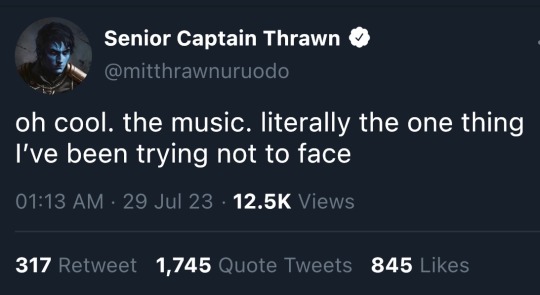

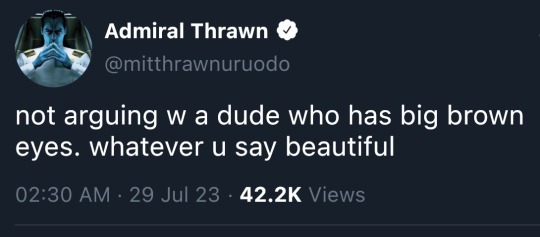

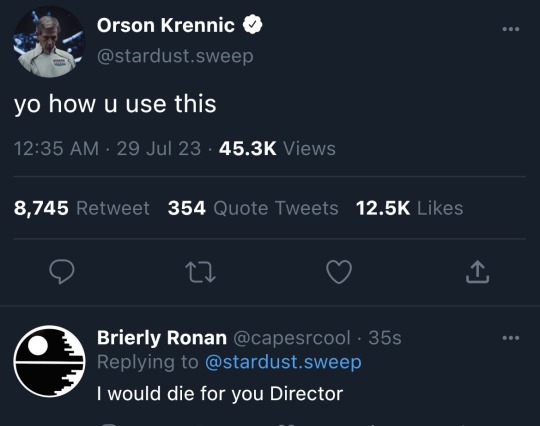


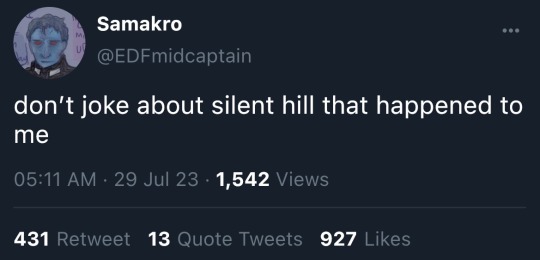


Today I bring you more of these things
(Pt 1) (2) (4) (5)
#tomorrow who knows (more of these)#I wasn’t lying when I said I made like 50 pffhfjf#I’m sorry they have to go in like. so many posts? I can’t add more than 10 each#thrawn#thrawn ascendancy#thrawn trilogy#eli vanto#samakro#thrass#brierly ronan#orson krennic#borika#sw#Star Wars#z speaks
211 notes
·
View notes